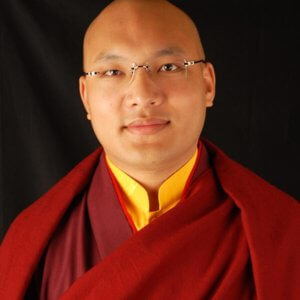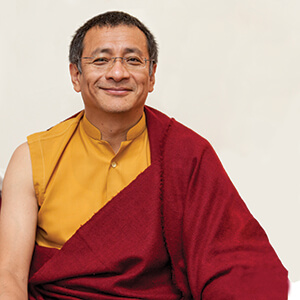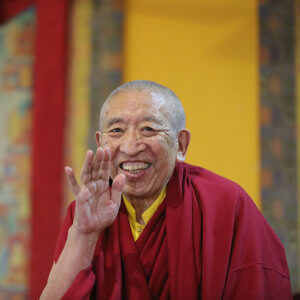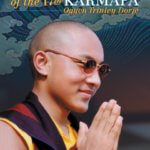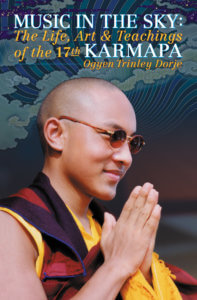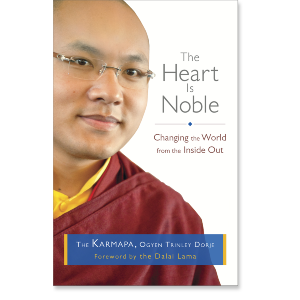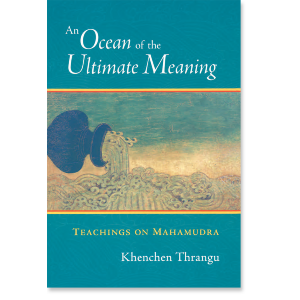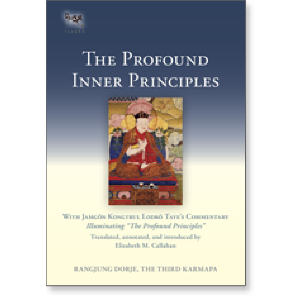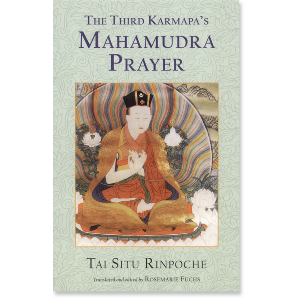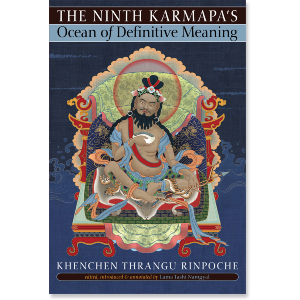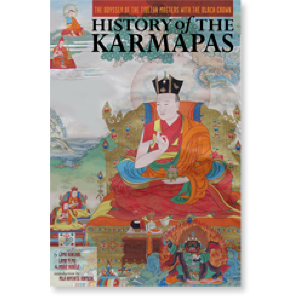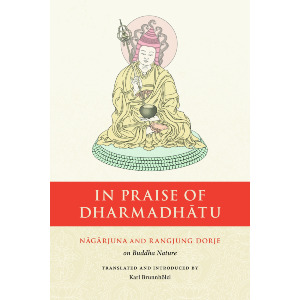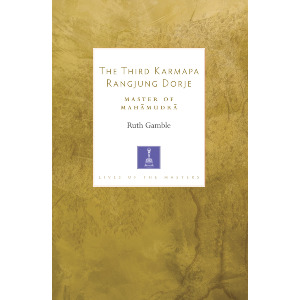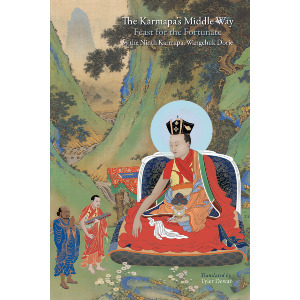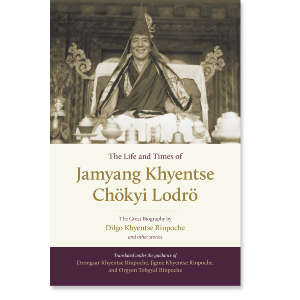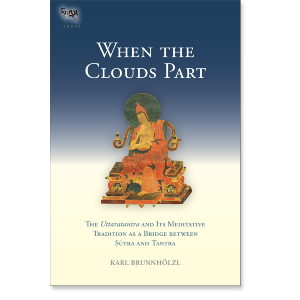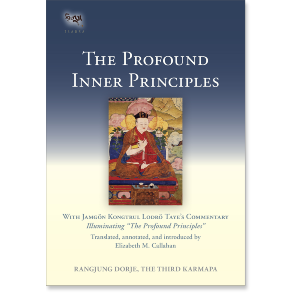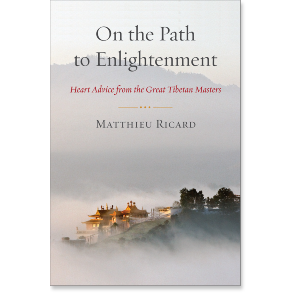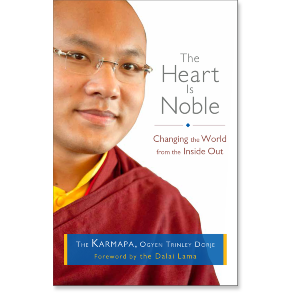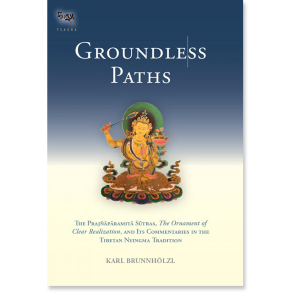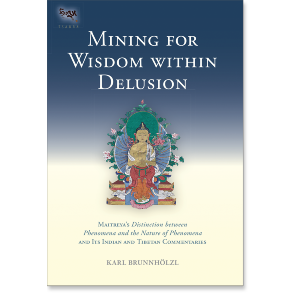| The following article is from the Spring, 2003 issue of the Snow Lion Newsletter and is for historical reference only. You can see this in context of the original newsletter here. |
Ogyen Trinley Dorje
The first authorized compilation of the Karmapa's teachings, plus stories from his life and examples of his art
As the second millennium drew to a close, the Seventeenth Karmapa leapt from the roof at his monastery in Tibet. Evading his Chinese guards, the then 14-year-old spiritual leader began a grueling, dangerous journey to India. The Karmapa's picture has appeared all over the world since then, yet his own words are hard to find. Now, for the first time in print, Music in the Sky offers a series of the Karmapa's profound teachings, an extensive selection of his poetry, and a detailed and gripping account of his life and flight from his homeland. Readers will be captivated by this wonderfully accessible and profound book.
Music in the Sky concludes with brief biographies of all 16 previous Karmapas, specially composed for this publication by the highly respected Seventh Dzogchen Ponlop Rinpoche. Here, the reader will discover the compelling histories of the first Tibetan masters to be recognized as reincarnate lamas. Music in the Sky presents a definitive portrait of the Seventeenth Karmapa, strengthened and illuminated by an authoritative depiction of his place in one of the world's most revered lines of spiritual teachers.
The bright sun of the Gyalwa Karmapa shines throughout this book. It illuminates his young life from his discovery in eastern Tibet through his difficult journey to India. The text also reveals the breadth of his teachings and the beauty of his poetry and art.
Anyone wishing to know more about him and the ancient tradition of Buddhism he embodies would do well to read this book.
KHENCHEN THRANGU RINPOCHE, tutor to H.H. the 17th Gyalwa Karmapa, and author of Essential Practice, Everyday Consciousness and Buddha- Awakening
(now titled, Everyday Consciousness and Primordial Awareness).
MICHELE MARTIN has published numerous translations and has served as an oral translator from Tibetan and as a teacher all over the world. She lives in Woodstock, NY.
The following is a selection of excerpts from Music in the Sky.
The biography:
Arriving at the monastery around 9: 00 A.M., Lama Tsultrim took out the carefully wrapped clothes they had bought for the Karmapa and told one of his attendants,
"These are Lama Nyima's. Please bring them to him."
In this way, the Karmapa's change of clothes arrived safely in his room.
Then Lama Tsultrim went to talk to the administration about leaving. In line with his former paving project, he said,
"We need a courtyard in front of the new temple of the Tsurphu Lhachen. I want to go and raise funds for it in Nagchu."
While practicing the path that leads to stable, unexcelled bliss, when we meet with problems, we are also meeting with the pure nature they embody: the possibility of liberation arises at the same time as the problem.
He was easily given permission to leave and returned to his room, where he lived alone. He was too worried to eat. Thinking that he was leaving on a long trip, his friends came to visit with him. They offered to take his things to the car, but he replied,
"I'm not sure if I'm leaving tonight or tomorrow morning, so let's wait on that."
Bidding good-bye and good luck, they left.
This same day, Lama Nyirna telephoned from Tsurphu to Nenang Lama in Lhasa. In the course of their conversation, he mentioned:
"This evening at 10:30 the Chinese are showing a special program on TV. Why don't you take a look at it?"
Nenang Lama responded,
"I'd like to see it."
This way he knew that the guards would be watching TV at 10:30 and the Karmapa could escape then.
I have many relatives and friends in Tibet, but one day I will die and have to part from each one of them. His Holiness is a great master of Tibet and has been for so many generations. My broader responsibility is to him.
That afternoon, Lama Nyima and Thubten said to the driver, Dargye,
"Bring around the car and let's go for a little drive."
They went to the Lower Park, a beautiful place with a summer residence for the Karmapa and the home of a special deer. They left the car on the road and walked up into the park. They said to Dargye,
"Let's sit down here. Have a seat, we had a special purpose in inviting you here. His Holiness is leaving for India and thought that you would be the best person to drive. You're an experienced driver and know the car so well. If you don't want to go, that's all right. We're not forcing you in any way. Everything depends on your mind and inclination. Can you make up your mind to leave your parents and relatives? Think it over carefully. If you decide to go, we leave tonight at 10:30. If you come, it's a great decision. If you choose not to go, it's all right, but you must not tell anyone else."
Dargye reflected:
"I have many relatives and friends in Tibet, but one day I will die and have to part from each one of them. His Holiness is a great master of Tibet and has been for so many generations. My broader responsibility is to him."
He replied:
"I will go with you. Don't worry."
Around five o'clock that afternoon, Lama Nyima came to visit Lama Tsultrim in his room to confirm that they would be leaving at 10:30. He gave him a necklace of coral and zi stones for the Karmapa saying,
"When he arrives at Rumtek, it would be beneficial to wear it during lama dancing."
He advised Lama Tsultrim to be extremely careful on the road, taking good care of the Karmapa so that the police would not capture him and they could arrive safely in India. He said,
"If His Holiness can escape to India and meet Situ Rinpoche, Gyaltsap Rinpoche, and Jamgon Rinpoche and finally go to Rumtek, I will have no regrets even if I lose my life."
then at the end of the Mahakala puja, I realized he had composed a recognition letter for a young tulku.
During this uncertain year, the Karmapa continued to recognize tulkus. Dzogchen Ponlop Rinpoche described one occasion:
"One evening, we were doing the Mahakala puja, and His Holiness the Karmapa asked me to bring the computer. I was very uncomfortable bringing the computer to the Mahakala puja, but it was a command, so I brought his laptop to the puja. Then he said to write down what he would dictate, and so in between the chanting, I was writing his words down. He would say one word and then play the music with the damaru and bell, and then he would say another word. At first, I could not tell what he was dictating, and then at the end of the Mahakala puja, I realized he had composed a recognition letter for a young tulku. It just comes like that. There is the name of a place, the father's name, the mother's name, and the year in which the -child is born. Amazing! I have heard of these things before but never experienced them directly."
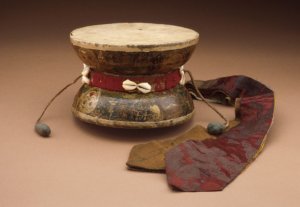
Spiritual traditions have their freedom, and we are also free to choose one that draws us and to hold its lineage. With many different traditions, the Buddhist teachings have a broader opportunity to grow and spread and bring benefit to this world.
From the teachings:
Question: Do we need to embrace just one spiritual tradition, or can we go around to all of them and take a little here and a little there?
Answer: All over the world, we find many diverse spiritual traditions. Within Tibet, there are mainly five that have classic descriptions: the glorious Sakyapa, the Nyingma of the Secret Mantrayana, the Gelukpa or those from the mountain of Ganden, the Kagyupa, protectors of living beings, and the Bonpo of the unchanging, nature. Each one of these accords with the particular perspectives of its followers. In the realm of taste, if someone likes bread, then they are given bread; if they like tea, they are given tea. In the same way, when we are studying, whichever teaching draws our interest and devotion is the one we study and practice.
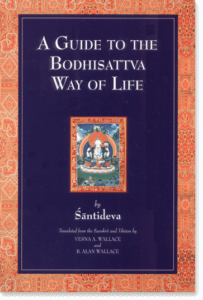
The Buddha taught for the benefit and happiness of every living being, not to force people to practice a particular spiritual tradition. For example, someone might prefer the yellow hat of the Gelukpa tradition to the red hat of the Kagyu. People should follow what they want to do, and later the reason for their preference, perhaps a hidden feeling, will surface. Therefore, from the perspective of what appears and appeals to individual beings, the different spiritual traditions were taught.
This spiritual tradition called Buddhism was taught by Shakyamuni Buddha so that all beings would benefit and attain happiness. There was absolutely no pressure to coerce anyone into practicing this tradition. As with the chillies, forceful tactics do not help at all. The Buddha did not teach to bring discomfort; he taught so that every living being could gather all the enrichments of life that bring well-being and happiness. Especially in this present world, independence, peace, and happiness are important. Spiritual traditions have their freedom, and we are also free to choose one that draws us and to hold its lineage. With many different traditions, the Buddhist teachings have a broader opportunity to grow and spread and bring benefit to this world.

While practicing the path that leads to stable, unexcelled bliss, when we meet with problems, we are also meeting with the pure nature they embody: the possibility of liberation arises at the same time as the problem. We should also remember that we are practicing not just for our own benefit but for the benefit of the infinite living beings in all realms.
For those who are practicing Dharma, various negative conditions come about and different kinds of fear arise. These can cause doubts to surface:
"Why should this be happening?"
Such thoughts could even propel someone into abandoning the Dharma. We should remember, however, that these negative situations arise for everyone who practices the Dharma, whether they are part of the monastic sangha or lay people who have taken refuge in the Three jewels.
The Dharma is of great value: it is an unexcelled path that brings us and all living beings equal to the extent of space onto the path of bodhichitta that leads to complete liberation. Since we are seeking to attain such a great goal, naturally there will be problems. Further, not only in relation to our Dharma practice but whatever activity we may be engaged in, it is not possible to avoid some minor, temporary problems. While practicing the path that leads to stable, unexcelled bliss, when we meet with problems, we are also meeting with the pure nature they embody: the possibility of liberation arises at the same time as the problem. We should also remember that we are practicing not just for our own benefit but for the benefit of the infinite living beings in all realms.
Negative spirits who create difficulties for Dharma practitioners will throw obstacles in the path of those who seek liberation. The harm they seek is to erase from the meditator's mind the desire to practice and attain liberation. Understanding this situation, practitioners should increase their diligence as much as possible and make as great an effort as they can to practice Dharma. This has two advantages. First, the obstacles can be stopped before they arise; and second, not losing all the work we put into practicing the path of liberation, we can continue along our journey.
Negative spirits who create difficulties for Dharma practitioners will throw obstacles in the path of those who seek liberation.
These days, some practitioners think that they must meditate intensely and attain all the qualities and special attributes of the Dharma, but they do not know well the nature of the view, meditation, or conduct taught in their own tradition. Even so, they insist that sometime very soon they will be enlightened and endowed with all the major and minor marks of the Buddha. When this does not happen, they say,
"The Dharma is useless. It doesn't work. I practiced hard, but it was all for nothing."
It is true that within the genuine Dharma, there is the path of the Secret Mantrayana, or the Vajrayana, which is very swift. There we find the oral instruction that states,
"If you meditate right now, you'll become awakened right now."
The Buddha and all his followers continuously taught this. However, if our minds lack the mental strength or capacity to accomplish such a swift path, there is little chance of swift liberation. The possibility of attaining liberation depends on whether the Buddha taught this path; however, achieving liberation depends on us. Therefore, if we do not put forth our full strength, the Dharma will enter inside but will not become manifest. If we do not have the capacity or the necessary attributes to attain the fruition of the practice in our tradition, we might then go to another tradition and, not attaining the result once again, disparage that tradition, saying that it Is not good. This pattern is the result of not being able to distinguish between a religious tradition and the individual, between the teachings and our limited self.
There are other benefits from receiving an empowerment, but the main point is for us to see the very nature of our mind.
In Buddhism, what we call "a religious tradition" means practicing a view or philosophy of the mind. All the paths found in these traditions are related to the mind. The Buddha and the incomparable masters who followed him taught that taming our minds is extremely important. Many of us have studied the major texts of Buddhism. (How much other types of study, like the sciences, benefit the mind ultimately is not clear.) If we receive a commentary on how to meditate on the preliminary practices or if we take an empowerment, these activities can benefit our minds. They are the heart of Dharma and have the purpose of establishing in our mind the habitual pattern for true happiness. If these do not help us, then receiving an empowerment does not impart its essential benefit: it is just placing a vase on our heads, and a great deal of work for the lamas.
There are other benefits from receiving an empowerment, but the main point is for us to see the very nature of our mind. It is beneficial if positive habitual patterns can be established within our mind, for example, an experience of the true nature that can blend with and benefit our mind. If this does not arise, then no matter how many texts we have studied or how many empowerments we have received, they will not be very useful. It is crucial to connect with the essential nature of our own mind.
For more information:
